Ferret vs. Polecat: Which Makes A Better Pet?
In the wonderful world of ferrets, you might have heard of the European polecat. An exciting creature that to the untrained eye looks precisely like a ferret. You might be wondering what the real differences are, if any, at all. And if you can keep them as pets along with ferrets. And of course, the big debate of ferret vs. polecat: which makes a better pet? Let’s look at these two unique creatures and see what their care is like together.
What Are The Differences?
While there is a slight difference between polecat and ferret appearances, the main difference is temperament. We all know that the ferret is a rambunctious weasel that loves company and never stops playing. But polecats are the undomesticated forms of ferrets. They don’t typically like friends and live solitary lives. Polecats still love to play and get into things, but they prefer to find the mischief themselves.
At a glance, ferrets and polecats might look identical. But polecats have a larger round head. They also only come in darker browns and reddish colors, whereas ferrets are lighter and have a light spot on the throat. Another difference in appearances is that ferrets are slimmer with longer bodies, and polecats are stalkier. And even if your eyes can’t see the differences, your nose will. Polecats have a heavy musky scent that is stronger than a ferret.
Which Makes A Better Pet?
Ferrets are domesticated polecats. So in a sense, they are the same animal with slightly different personalities. Both can make excellent pets, depending on your lifestyle and personality type. If you want a more social creature that is easy to tame and have a small colony, ferrets are your best choice. But if you prefer to have just one and don’t mind that your pet might not be the cuddliest, you might be a great candidate for a polecat.
Both the ferret and the polecat are good intermediate level pets. So if you are used to having small animals like hamsters or guinea pigs, ferrets and polecats aren’t too much more difficult. But as a word of caution, both of these pets don’t make the greatest pets for kids. Older children that understand how to respect an animal’s space might do well with ferrets, but polecats are harder to tame.
Pros Of Owning A Ferret Or Polecat
One of the best ways to figure out what pet is right for you is to make a list of pros and cons. By looking at each pet’s pros and cons, you can decide which one aligns more with your personality and ideals. We will start by the pros and cons of the European polecat vs. domestic ferret, and then the pros and cons that they have in common.
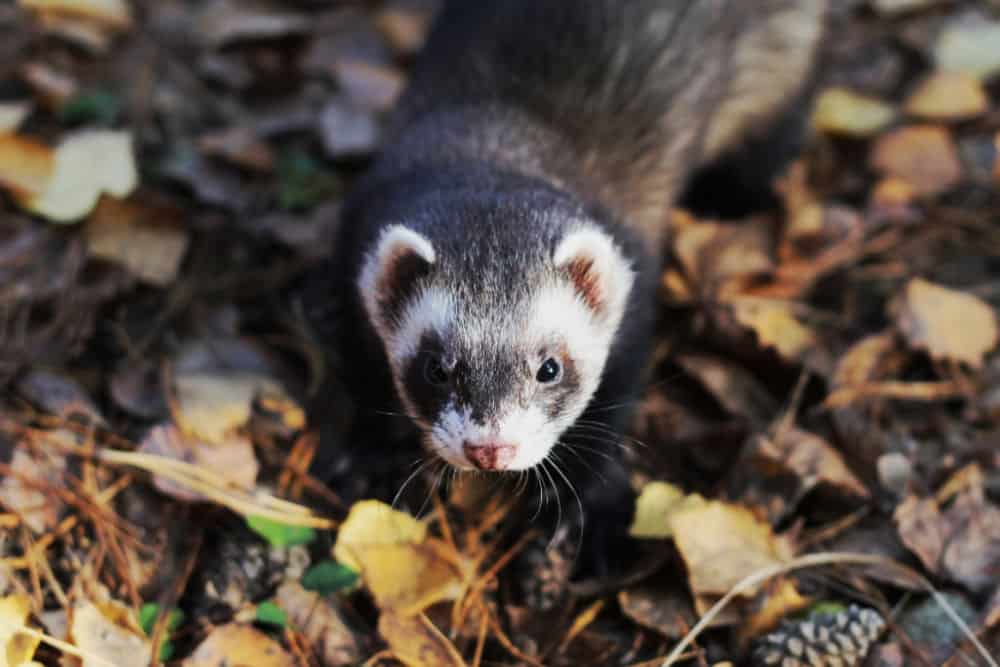
Pros Of Owning Ferrets
- Ferrets are very social creatures that love having friends and bond with people well.
- You can also litter train them quickly in the cage and around the house.
- Your ferrets will learn tricks with a little treat motivation.
- Ferrets are easy to tame and love being handled.
- They smell less than polecats.
- You can easily find a breeder for ferrets across the US.
- There are eight color morphs to choose from, and each is more stunning than the last.
- Ferrets have a long lifespan of 5-9 years.
Cons Of Owning Ferrets
- You have to keep them in pairs, or they will get lonely.
- While they smell less than polecats, ferrets still smell if not cleaned regularly.
- Ferrets are easily tamed, but biting is inevitable in the process.
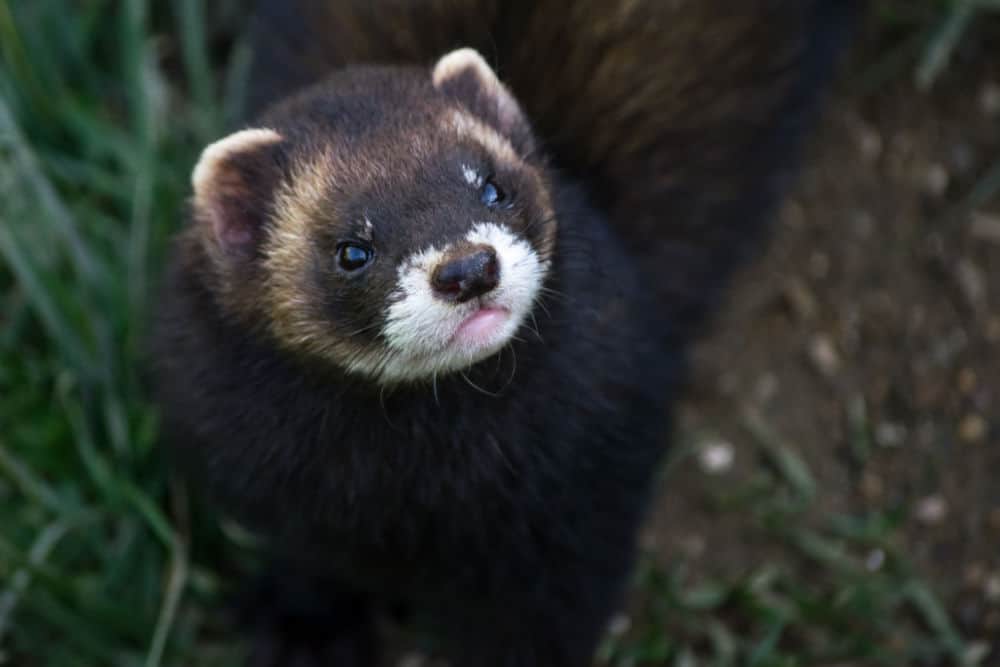
Pros Of Owning Polecats
- Polecats need to be alone. In nature, they only spend time around others when they mate.
- Polecats are very independent creatures that do just fine with or without your constant attention.
- Intelligent and can sometimes learn tricks with motivation and persistence.
- Very distinguished look that most people prefer over the ferret.
- Polecats live longer than ferrets, with an average of 14 years.
Cons Of Owning Polecats
- Polecats have a strong scent that doesn’t go away.
- Males will bathe in their urine, especially during the breeding season.
- Most don’t take to litter training well, but you can stick a pan in their favorite corners.
- They don’t like having cagemates and will fight if kept together.
Pros Of Both
- Both of them live long lives.
- It is easy to find cages and supplies for both.
- You can buy high-quality ferret or cat food and meaty treats to feed them.
- The polecat and ferret are both very playful, and you will enjoy watching their antics.
- Vets can spay and neuter both pets.
Cons Of Both
- They need large setups.
- Both are expensive, but you might spend a little less on food monthly for polecats since they are solitary.
- European polecats and ferrets are not legal everywhere.
- Both of these creatures are excellent escape artists and will get out of their rooms and cages often.
- And finally, both of them need a lot of time outside of the cage for exercise and socializing.
Basic Care
Because we domesticated ferrets from the European polecat, they don’t have any notable differences in care, food, or enrichments. Below we have some of the most basic care essentials you need to get any of these creatures.
Cage
Ferrets and polecats need a lot of room. The minimum size for one animal is 24″w x 24″d x 40″h. If you have multiple ferrets, you will also need to ensure that your cage has 2 square feet of space added for each ferret in the cage. A cage this tall will have at least three levels that make it into a fun playhouse. You will want to deck it out in plenty of tubes, hammocks, toys, and other essentials.
Once you get all of this in your cage, you might notice that it seems a little small. Many polecat and ferret owners prefer the Ferret Nation because of its space and its modification possibilities. If you have multiple ferrets, you can take out the wall of these cages and attach them side by side. You can also buy more shelves that are custom made for a unique play area. And even though polecats like to like alone, they can also benefit from a larger cage. There is no such thing as too big for these pets.
Bedding
Many ferret and polecat owners prefer to use fleece covers for their cages. You can use paper bedding, but they are more of a mess and get expensive to replace. Fleece covers can be made or bought in any design you can think of. They are washable too, so all you have to do is vacuum the surface and throw it in the wash. Easy peasy clean up right there.
But keep in mind that ferrets and polecats love to burrow. You will want to add hammocks and strips of blankets for your pets to burrow in. Otherwise, they will try to burrow in your fleece liners and tear them apart in the process.
Litter And Litter Pans
Litter is one big difference between polecat and ferret. Ferrets usually potty train with ease. You will want a tall backed litter pan and an odor reducing litter. Many owners prefer paper or pine pellets as litter because it is absorbent, odor locking, and cheap. To litter train, all you need to do is set the litter pan in your ferret’s favorite corner and place a few droppings in it. If they change corners, move the box too. Ferrets typically catch on quickly.
You can try this same method with a polecat, but it is not a guarantee. Some polecats take to potty training quickly. But others never catch on. If potty training doesn’t work out for you, don’t worry. The only benefit of it is that it makes free-roaming and cleaning easier. It is not a necessity.
Diet
Both ferrets and polecats have the same diet requirements. Both of these animals are obligate carnivores. That means that they don’t have any real need for fresh fruits and vegetables, and in many cases, they will get sick from them. Luckily the pet food industry has stepped it up with making high-quality ferret food that polecats can eat as well. The most popular brand is Wysong ferret food. It has everything that your pet will need for a healthy coat and digestive tract. But some owners prefer to make their own raw food diets, especially for polecats to keep them healthy. For treats, you can give your furry slinkies freeze-dried meats or even raw eggs.
Exercise
When it comes to exercise, the European polecat vs domestic ferret is tied. Each of them, no matter how social they are, needs a lot of attention. At a minimum, your pet should have 4 hours outside of the cage a day. They need time to run around, stretch, and play without being confined. If you are looking for an animal that stays in the cage, these are not for you.
Vet Care
Ferrets and European polecats are prone to multiple diseases. Things like:
- obesity
- heart conditions
- lymphoma
- adrenal gland disease
- and dental disease
All of these are very prominent in the ferret/polecat community. Your pet should have a trip to the vet at least every six months for a check-up. And once a year, they will also get rabies and distemper vaccines to keep them healthy. Regular check-ups can get expensive, but they are life-saving.
Which Will You Choose?
In the ferret vs. polecat debate, there is one thing everyone can agree on. Both of them make lovely pets in the right family. You will love and cherish their ornery shenanigans for years to come.

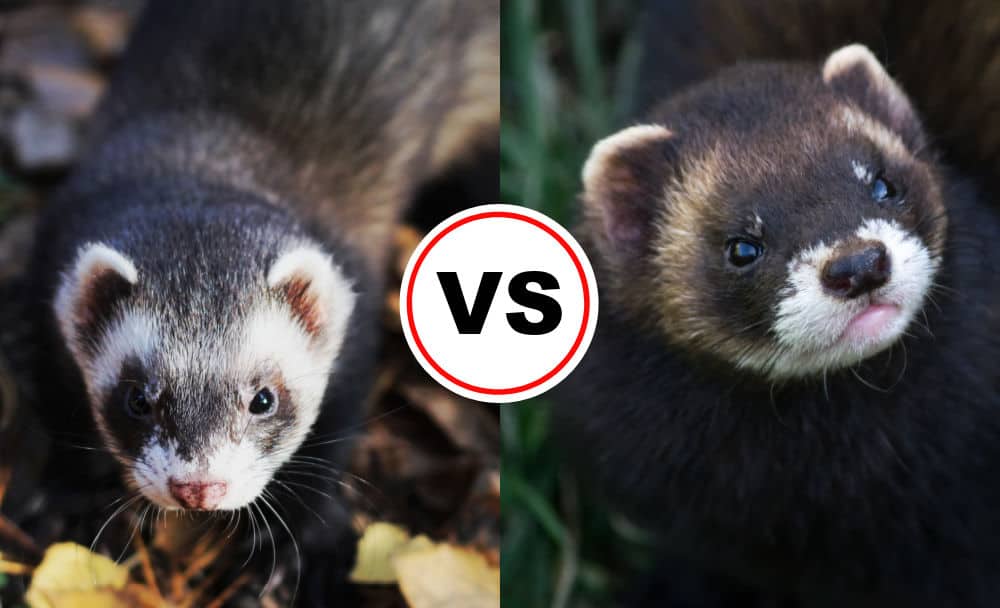
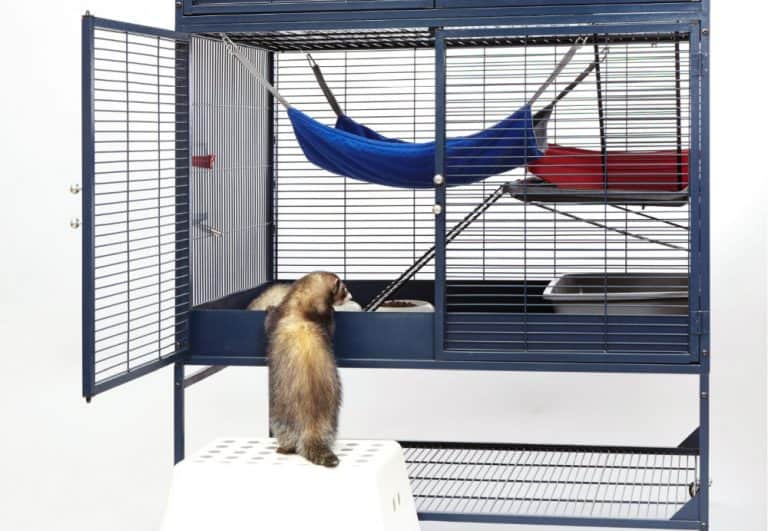
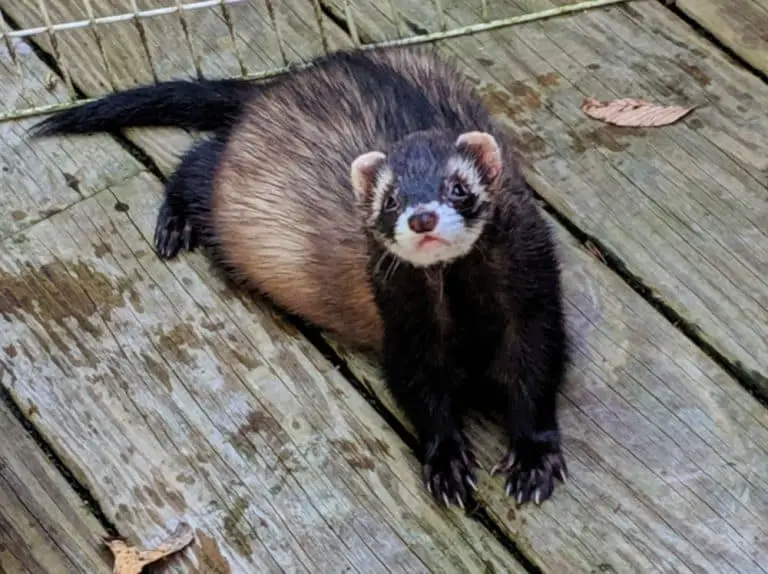
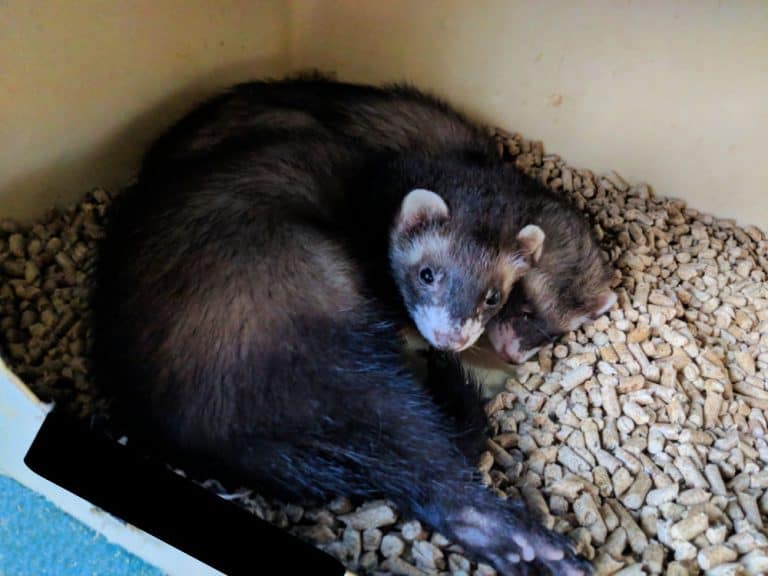

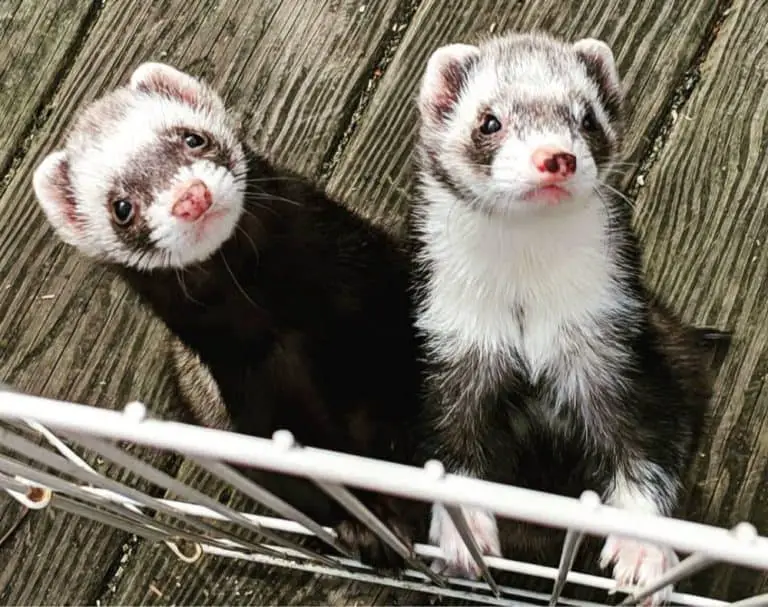
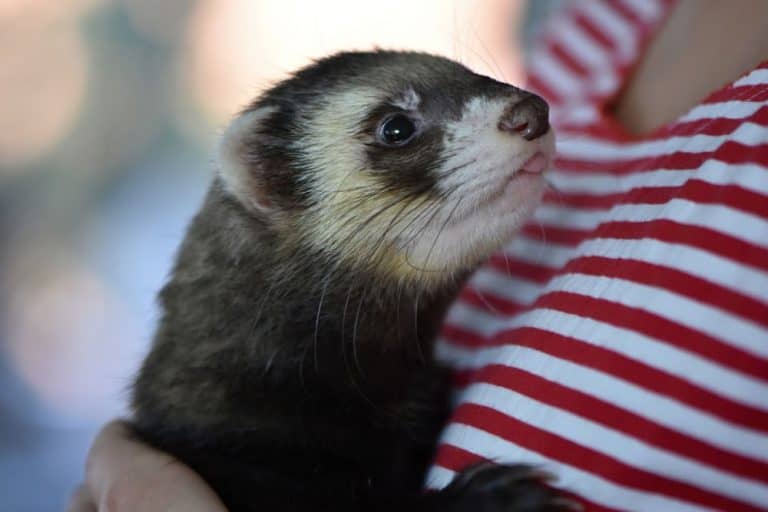

Thank you so much for your awesome content. Keep sharing more with us.